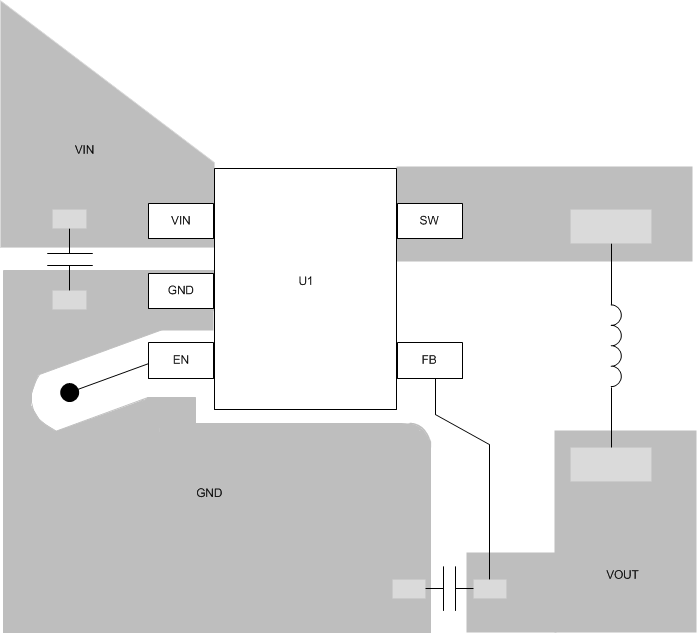SLVSB38C March 2011 – August 2016 TPS62242-Q1
PRODUCTION DATA.
- 1 Features
- 2 Applications
- 3 Description
- 4 Revision History
- 5 Pin Configuration and Functions
- 6 Specifications
- 7 Parameter Measurement Information
- 8 Detailed Description
- 9 Application and Implementation
- 10Power Supply Recommendations
- 11Layout
- 12Device and Documentation Support
- 13Mechanical, Packaging, and Orderable Information
11 Layout
11.1 Layout Guidelines
As for all switching power supplies, the layout is an important step in the design. Proper function of the device demands careful attention to PCB layout. To get the specified performance, the board layout must be carefully done. If not carefully done, the regulator could show poor line or load regulation, and additional stability issues as well as EMI problems. Figure 16 shows an example of layout design with the TLV62242-Q1 device.
- Providing a low-inductance, low-impedance ground path is critical. Therefore, use wide and short traces for the main current paths. The input capacitor as well as the inductor and output capacitor must be placed as close as possible to the IC pins.
- The FB line must be connected directly to the output capacitor and the FB line must be routed away from noisy components and traces (for example, the SW line).
- Because of the small package of this converter and the overall small solution size, the thermal performance of the PCB layout is important. For good thermal performance, PCB design of at least four layers is recommended.
11.2 Layout Example
 Figure 16. Suggested Layout for Fixed Output Voltage
Figure 16. Suggested Layout for Fixed Output Voltage